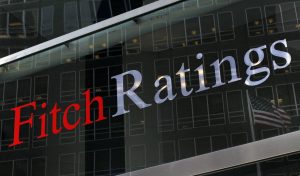Government will have to focus its attention on fiscal deficit compression in the new year in order to bring the country’s debt level under control.
This is the assertion of an economist with Databank, Courage Martey.
Ghana’s total public debt stock rose by GHS54.8 billion in the first nine months of this year, hitting GHS273.8 billion as at the end of September 2020.
The figure has pushed Ghana’s debt to GDP ratio to 71 percent, crossing the dreaded 70 percent threshold for the first time since December 2016 when the figure stood at 73.3 percent. The situation has added to the pressure for government to slow down the rate of debt accumulation.According to the latest Summary of Macroeconomic and Financial Data from the Bank of Ghana, the total public debt stock which started the year at GHS219.6 billion, has increased by 26.7 percent within nine months.
Debt accumulation for the first 9 months of 2017, 2018 and 2019, however, rose by 8.9 percent, 17.2 percent and 18 percent respectively.
A breakdown of the debt numbers shows that GHS 138.5 billion of the debt were secured from outside the country, this is about 35.9 percent of the total value of the economy.
On the other hand, GHS135.3 billion was secured locally. This represents 35.1 percent of GDP.
Speaking to Citi Business News on the matter, Courage Martey outlined some steps government should take to control the country’s debt levels.
“The most important step to take is fiscal deficit compression because the reason why the public debt went so high was because we spent monies that we didn’t have, so we had to borrow to support that spending but when you start to compress the deficit and spend to reduce the excess spending then there will also be a reduction or a slow down in the rate of borrowing so that will help and with the economy steadily recovering then there will also be an improvement in the debt ratios”.
He added, “Also in the time when you have to borrow the cost of the debt is also very important because a portion of our debt is as a result of borrowing to pay interest, the higher the interest rate the higher you have to borrow to pay interest and so there is also the need to keep interest rates very manageable”.







